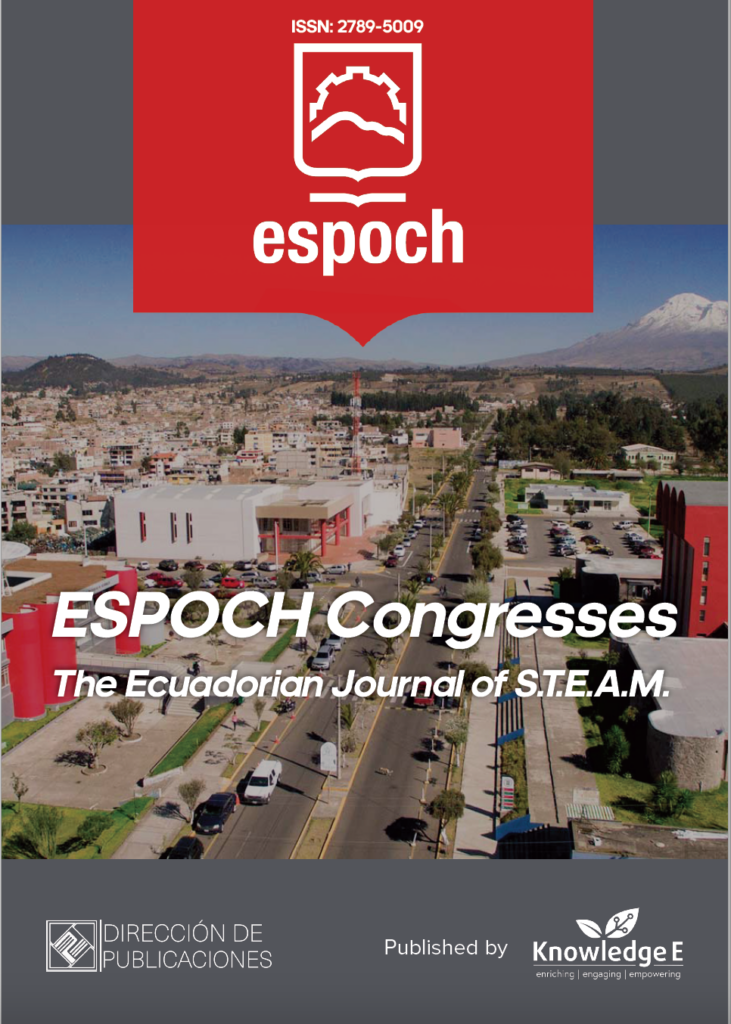
ESPOCH Congresses: The Ecuadorian Journal of S.T.E.A.M.
ISSN: 2789-5009
Leading Ecuadorian research in science, technology, engineering, arts, and mathematics.
Management Model of Ecological Tourism for the City of Francisco de Orellana
Published date:Aug 29 2021
Journal Title: ESPOCH Congresses: The Ecuadorian Journal of S.T.E.A.M.
Issue title: Volume 1, Issue 4
Pages:1179 - 1186
Authors:
Abstract:
The purpose of the present study is to design a management model of ecological tourism for the city of Francisco de Orellana. Through the compilation of information and tourist offers, and the analysis of biophysical, sociocultural and economic areas, and plants, superstructures and attractions that appeal to tourists, 4 natural and 5 cultural places were identified. With the application of the environmental impact matrix, it was determined that tourist attractions present a high level of contamination due to the presence of the industrial sector and the inadequate handling of dirty water and solid waste. The most affected tourist attractions are: Napo and Payamino rivers, the Yacu eco-park and the boardwalk; throughout the environmental impact matrix they establish obstacles to environmental remediation. With the results obtained, a sustainable tourism management model was designed based on the objectives of Plan Nacional del Buen Vivir and PLANDETUR 2020. The study concludes that the management model will provide a starting point for the development of sustainable tourism activity in the city.
Keywords: sustainable tourism, management model, environmental sustainability, government policies, environmental impact, strategic plan.
Resumen
El objetivo de la presente investigación es diseñar un modelo de gestión del turismo ecológico para la ciudad de Francisco de Orellana. A través de la recopilación de información, oferta turística y el análisis de áreas biofísicas, socioculturales, económicas, planta turística, superestructura turística y el atractivo turístico donde se identificaron 4 lugares naturales y 5 culturales. Con la aplicación de la matriz de impacto ambiental se determinó que los atractivos turísticos presentan un alto nivel de contaminación debido a la presencia del sector industrial y al manejo inadecuado del agua sucia y los residuos sólidos. Los atractivos turísticos más afectados son: Ríos Napo y Payamino, Payamino El eco parque Yacu y el malecón, a lo largo de la matriz de soluciones, establecen alternativas de remediación ambiental. Con los resultados obtenidos, se diseña un modelo de gestión del turismo sostenible basado en los objetivos del Plan Nacional del Buen Vivir y PLANDETUR 2020. Se concluye que el modelo de gestión proporcionará el comienzo para desarrollar una actividad turística sostenible en la ciudad.
Palabras clave: turismo sostenible, modelo de gestión, sostenibilidad ambiental, políticas gubernamentales, impacto ambiental, plan estratégico.
References:
[1] Meixueiro G. ( Julio de 2008). Impacto de la actividad turística en el desarrollo local [Impact of tourism activity on local development]. Disponible en: http://www3.diputados.gob.mx/.../Iimpacto_ {%}20turismo_desarrollo_docto48.pdf. Spanish
[2] Di-Bella MG. Introducción al Turismo [Introduction to tourism]. México: Trillas S.A; 1991. Spanish
[3] Orellana GM. Plan de Desarrollo y Ordenamiento Territorial Municipal de Francisco de Orellana. Orellana: s/n. 2014-2019. Spanish
[4] Turismo M. Ministerio de Turismo [Internet]. 17 de 10 de 2013 [Recuperado el 05 de 10 de 2019]. De Noticias: https://www.turismo.gob.ec/el-coca-es-el-primer-destino-de-vida-de-ecuador/. Spanish
[5] Quirola D. Análisis del concepto de buen vivir aplicado a la planificación del turismo sostenible [Internet]. Primera Cumbre de Turismo Sostenible Galápagos. 2010. Disponible en: http://www.optur.org/docs/ SENPLADES{%}20Dania{%}20Quirola{%}20Turismo{%}2 0Sostenible%20230910.ppsx. Spanish
[6] Senplades. Plan Nacional de Desarrollo. Quito - Ecuador: CNP. 2017-2021. Spanish
[7] SIMAVIS (2008).
[8] Cifuentes (1992).
[9] Sainaghi (2006). [10] Beritelli P, Bieger T, Reinhold S, Laesser C. “The St. Gallen model for destination management”. 2015.
[11] Ornés Vásquez S.“La gestión pública del turismo en el distrito metropolitano de Caracas: fortalezas, debilidades y nuevos desafíos”. GestiónTurística. 2009; 12: 85–108.
[12] Pearce DG.“Destinos turísticos: conceptos e implicaciones para su gestión en tiempos de cambio”. En: Cànoves G, López Palomeque F. (Eds.) Turismo y territorio: innovación, renovación y desafíos. Valencia: Tirant Humanidades. 2014. p. 21–34. Spanish
[13] Vera, et al. (2011).
[14] González Cornejo & Rivas Ortega (2008).
[15] Pearce DG. “Plans and practitioners’ perspectives in New Zealand”. Tourism Planning & Development. 2015
[16] SERNATUR. Modelo de gestión integral de destinos turísticos [Internet]. 2008. Disponible en: http://www.sernatur.cl/wp-content/plugins/download-monitor/download.php?id= Modelo-Gesti{%}C3{%}B3n-Integral-Mayo2008.pdf. Spanish